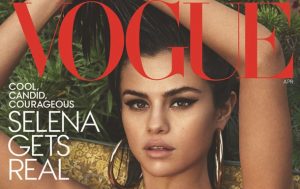 Vogue is the world’s preeminent fashion periodical, functioning as an authoritative voice on all things fashion related. Throughout its history, Vogue has set the standard for fashion coverage, innovating and changing with the times in a way that has managed to ensure its continued relevance. Over the years, this has meant the inclusion of varying amounts of social and cultural commentary, though the consistent focus of the magazine has always been informed coverage of the fashion world.
Vogue is the world’s preeminent fashion periodical, functioning as an authoritative voice on all things fashion related. Throughout its history, Vogue has set the standard for fashion coverage, innovating and changing with the times in a way that has managed to ensure its continued relevance. Over the years, this has meant the inclusion of varying amounts of social and cultural commentary, though the consistent focus of the magazine has always been informed coverage of the fashion world.
Begun in 1892 as a weekly journal intended to appeal to the elite of New York City, it was purchased by Condé Nast in 1909. The original formula for the magazine was a primary focus on coverage of New York’s wealthy elite, including some fashion coverage. Nast gradually introduced various changes, including more extensive coverage of Paris and London fashions. Visually, Nast introduced more color to the magazine, including color covers, which quickly placed Vogue at the forefront of women’s magazines. These innovations altered Vogue’s reputation from a magazine targeted specifically at the aristocratic classes to a magazine purveying the possibility of an aristocratic lifestyle for all.
Though Nast’s innovations helped push Vogue into a prominent position; this prominence has been sustained by a series of charismatic women who served as both editors-in-chief and tastemakers. Edna Woolman Chase (1914–51) guided Vogue through the early years of the 20th century. Jessica Daves (1952–62) is remembered for her interest in incorporating more serious journalism and coverage of the arts. This melding of fashion with more traditionally accepted artistic practices was the first step towards the melding of the fashion and art worlds that is so prevalent in the 21st century.
Vogue’s most flamboyant editor, Diana Vreeland (1963–71), was notorious for her vision of fashion as pure escapist fantasy. This view of fashion as excess resulted in her ousting in favor of Grace Mirabella (1971–88), who was considered more responsive to the fashion needs of the 1970s working woman. Anna Wintour (1988–present) not only documents styles, but sets them through her promotion of relatively unknown fashion talent. Wintour has also aligned the magazine with various philanthropic causes, including AIDS activism and the Metropolitan Museum of Art’s Costume Institute.
Throughout its history, Vogue has been associated with top illustrators and photographers such as Edward Steichen, Cecil Beaton, Lee Miller, Irving Penn, William Klein, David Bailey, Richard Avedon, Steven Meisel, and Georges Lepape. Capturing images of models garbed in the fashions of the moment, these artists have provided the high-quality images that ensure the continued success of the magazine.
In 2008, the Vogue empire included 12 international editions, along with the magazine Teen Vogue. Men’s Vogue ceased publication in 2008 due to financial pressures on the parent company. Vogue also has a Web page that provides readers with inter-issue updates on the fashion world.
Post Views: 271